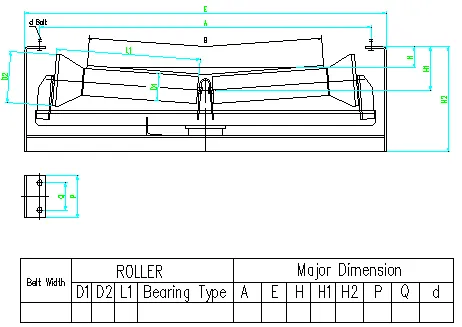 Afrikaans
Afrikaans  Albanian
Albanian  Amharic
Amharic  Arabic
Arabic  Armenian
Armenian  Azerbaijani
Azerbaijani  Basque
Basque  Belarusian
Belarusian  Bengali
Bengali  Bosnian
Bosnian  Bulgarian
Bulgarian  Catalan
Catalan  Cebuano
Cebuano  Corsican
Corsican  Croatian
Croatian  Czech
Czech  Danish
Danish  Dutch
Dutch  English
English  Esperanto
Esperanto  Estonian
Estonian  Finnish
Finnish  French
French  Frisian
Frisian  Galician
Galician  Georgian
Georgian  German
German  Greek
Greek  Gujarati
Gujarati  Haitian Creole
Haitian Creole  hausa
hausa  hawaiian
hawaiian  Hebrew
Hebrew  Hindi
Hindi  Miao
Miao  Hungarian
Hungarian  Icelandic
Icelandic  igbo
igbo  Indonesian
Indonesian  irish
irish  Italian
Italian  Japanese
Japanese  Javanese
Javanese  Kannada
Kannada  kazakh
kazakh  Khmer
Khmer  Rwandese
Rwandese  Korean
Korean  Kurdish
Kurdish  Kyrgyz
Kyrgyz  Lao
Lao  Latin
Latin  Latvian
Latvian  Lithuanian
Lithuanian  Luxembourgish
Luxembourgish  Macedonian
Macedonian  Malgashi
Malgashi  Malay
Malay  Malayalam
Malayalam  Maltese
Maltese  Maori
Maori  Marathi
Marathi  Mongolian
Mongolian  Myanmar
Myanmar  Nepali
Nepali  Norwegian
Norwegian  Norwegian
Norwegian  Occitan
Occitan  Pashto
Pashto  Persian
Persian  Polish
Polish  Portuguese
Portuguese  Punjabi
Punjabi  Romanian
Romanian  Russian
Russian  Samoan
Samoan  Scottish Gaelic
Scottish Gaelic  Serbian
Serbian  Sesotho
Sesotho  Shona
Shona  Sindhi
Sindhi  Sinhala
Sinhala  Slovak
Slovak  Slovenian
Slovenian  Somali
Somali  Spanish
Spanish  Sundanese
Sundanese  Swahili
Swahili  Swedish
Swedish  Tagalog
Tagalog  Tajik
Tajik  Tamil
Tamil  Tatar
Tatar  Telugu
Telugu  Thai
Thai  Turkish
Turkish  Turkmen
Turkmen  Ukrainian
Ukrainian  Urdu
Urdu  Uighur
Uighur  Uzbek
Uzbek  Vietnamese
Vietnamese  Welsh
Welsh  Bantu
Bantu  Yiddish
Yiddish  Yoruba
Yoruba  Zulu
Zulu pulley rubber
The Significance of Rubber in Pulley Systems
Pulleys are among the simplest yet most effective machines used in various industries to move, lift, and secure loads with minimal effort. One of the critical components that improve the functionality and efficiency of pulley systems is rubber. This article explores the significance of rubber in pulley systems, highlighting its properties, benefits, and applications.
Rubber has unique characteristics that make it an ideal material for pulley systems. Firstly, its elasticity provides excellent shock absorption, which is essential in applications where load fluctuations are common. When a load is applied to a pulley, the inherent elasticity of rubber allows for a degree of stretch and flexibility, reducing the risk of damage to both the pulley and the load being lifted. This feature is particularly valuable in construction and manufacturing environments, where heavy machinery is used, and sudden changes in weight can occur.
The Significance of Rubber in Pulley Systems
Furthermore, rubber is resistant to various environmental factors, including moisture, temperature fluctuations, and chemicals. This property is vital for pulleys used in outdoor applications or in industries that deal with corrosive materials. With rubber components, pulleys can withstand adverse weather conditions and maintain performance without degrading. This longevity translates to lower maintenance costs and reduced downtime for equipment, making it an economical choice for many businesses.
pulley rubber

In addition to these practical benefits, rubber contributes to noise reduction in pulley systems. The elasticity and surface texture of rubber help to dampen vibrations and absorb sound, leading to quieter operation. This characteristic is particularly beneficial in settings where noise levels must be kept to a minimum, such as in residential areas or around sensitive equipment. The application of rubber in pulleys not only improves functionality but also enhances the overall working environment.
Moreover, rubber is relatively lightweight compared to other materials commonly used in pulley systems, such as metal. This lightweight nature allows for easier installation and transport of pulley systems, which is a significant advantage in both temporary setups, such as event stages, and permanent installations in warehouses and manufacturing facilities. The reduced weight can lead to a more efficient use of energy when lifting loads, contributing to sustainable practices in industrial operations.
Applications of rubber in pulley systems can be found across a wide spectrum of industries. In agriculture, rubber pulleys are used in irrigation systems and machinery, helping farmers efficiently manage their resources. In the automotive industry, rubber pulleys play a crucial role in engine timing and power transmission systems. Furthermore, they are also utilized in entertainment settings, such as theaters and amusement parks, where they assist in operating stage equipment and rides, respectively.
In conclusion, rubber is an indispensable material in the construction and function of pulley systems. Its unique properties, including elasticity, grip, durability, noise reduction, and lightweight nature, contribute to the efficiency, safety, and longevity of these systems. As industries continue to evolve and seek ways to improve productivity and sustainability, the role of rubber in innovative pulley designs will undoubtedly remain significant. Embracing the advantages of rubber ensures that pulley systems operate smoothly, effectively, and reliably, meeting the demands of modern applications across various sectors.
-
Revolutionizing Conveyor Reliability with Advanced Rubber Lagging PulleysNewsJul.22,2025
-
Powering Precision and Durability with Expert Manufacturers of Conveyor ComponentsNewsJul.22,2025
-
Optimizing Conveyor Systems with Advanced Conveyor AccessoriesNewsJul.22,2025
-
Maximize Conveyor Efficiency with Quality Conveyor Idler PulleysNewsJul.22,2025
-
Future-Proof Your Conveyor System with High-Performance Polyurethane RollerNewsJul.22,2025
-
Driving Efficiency Forward with Quality Idlers and RollersNewsJul.22,2025





























